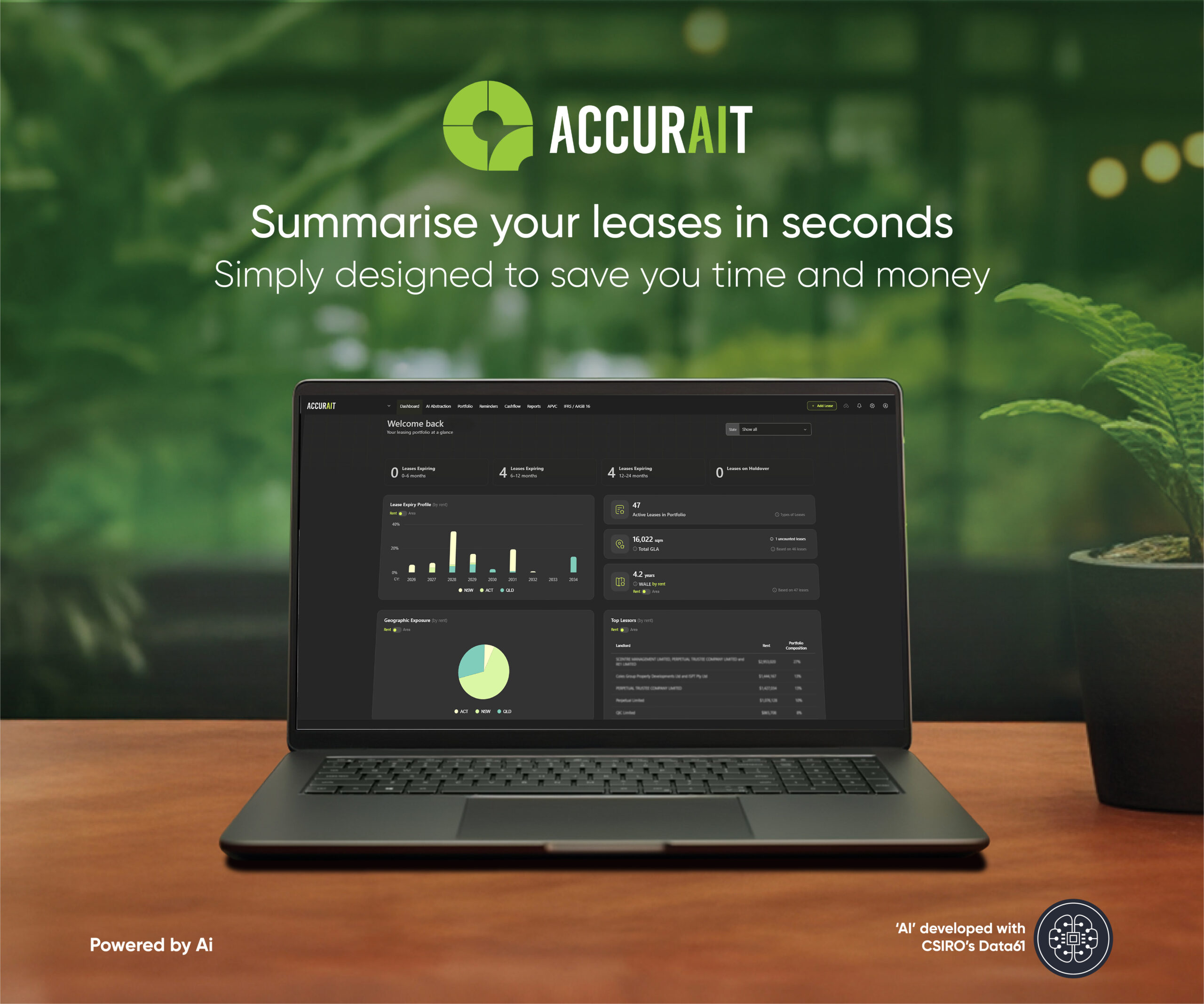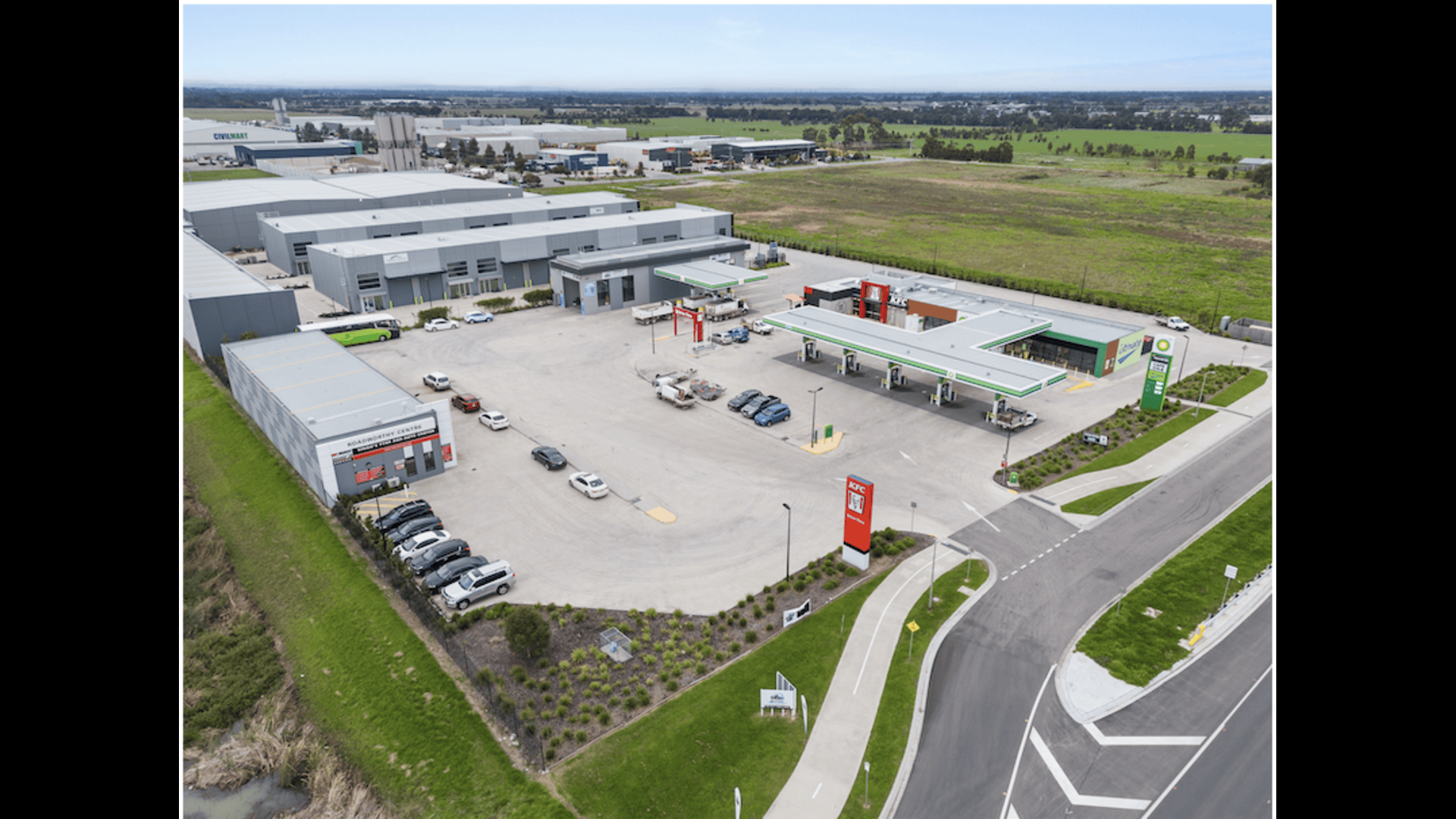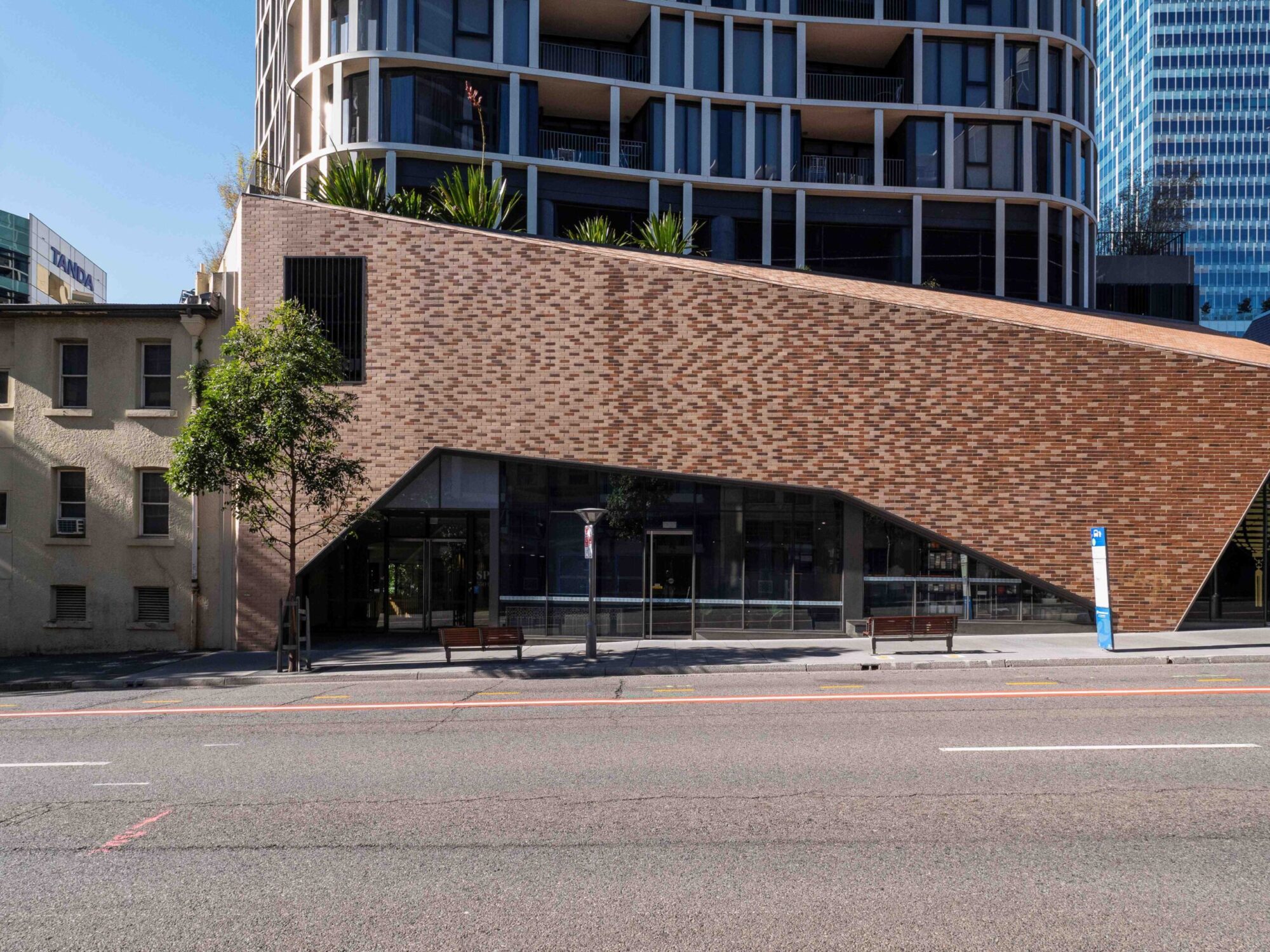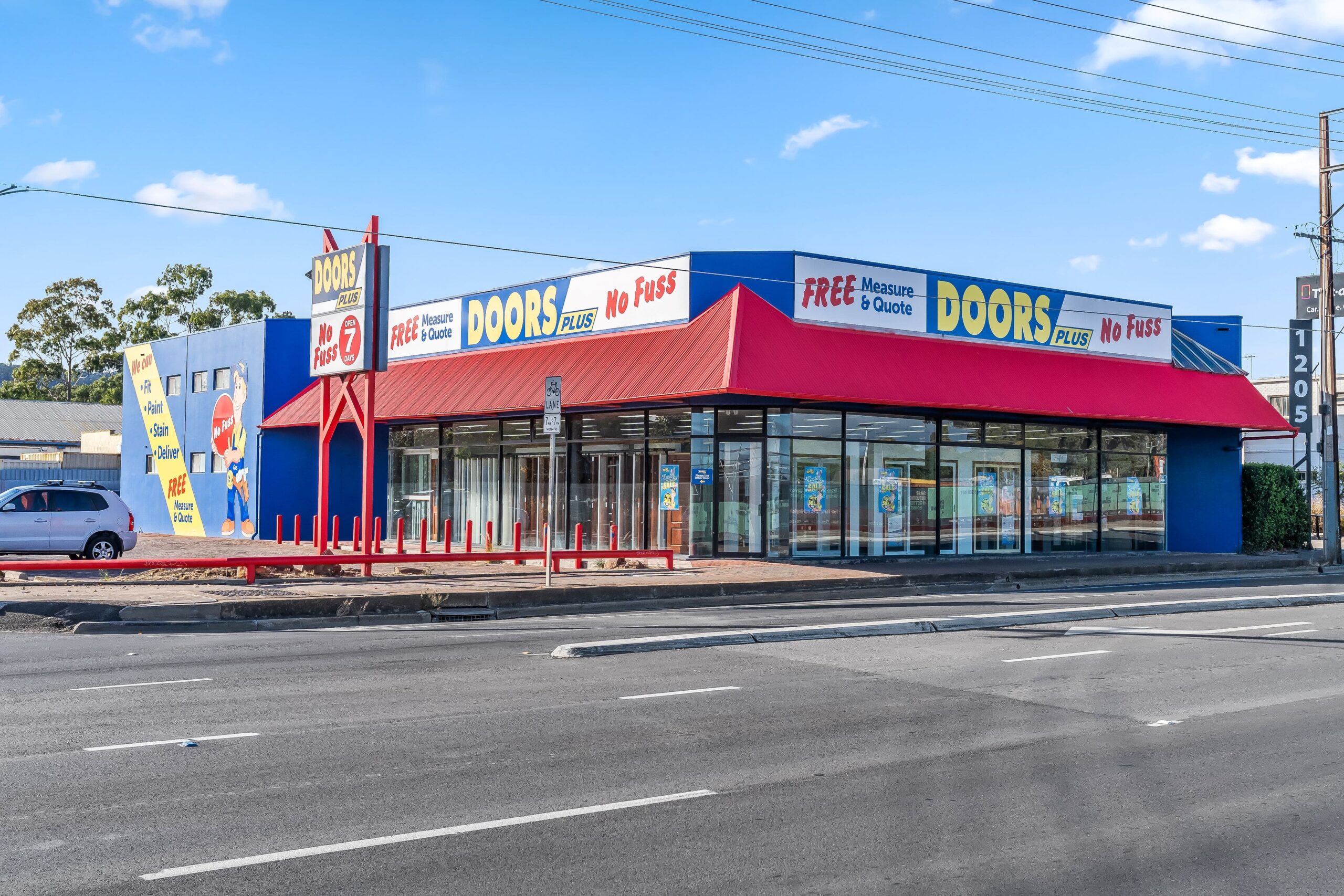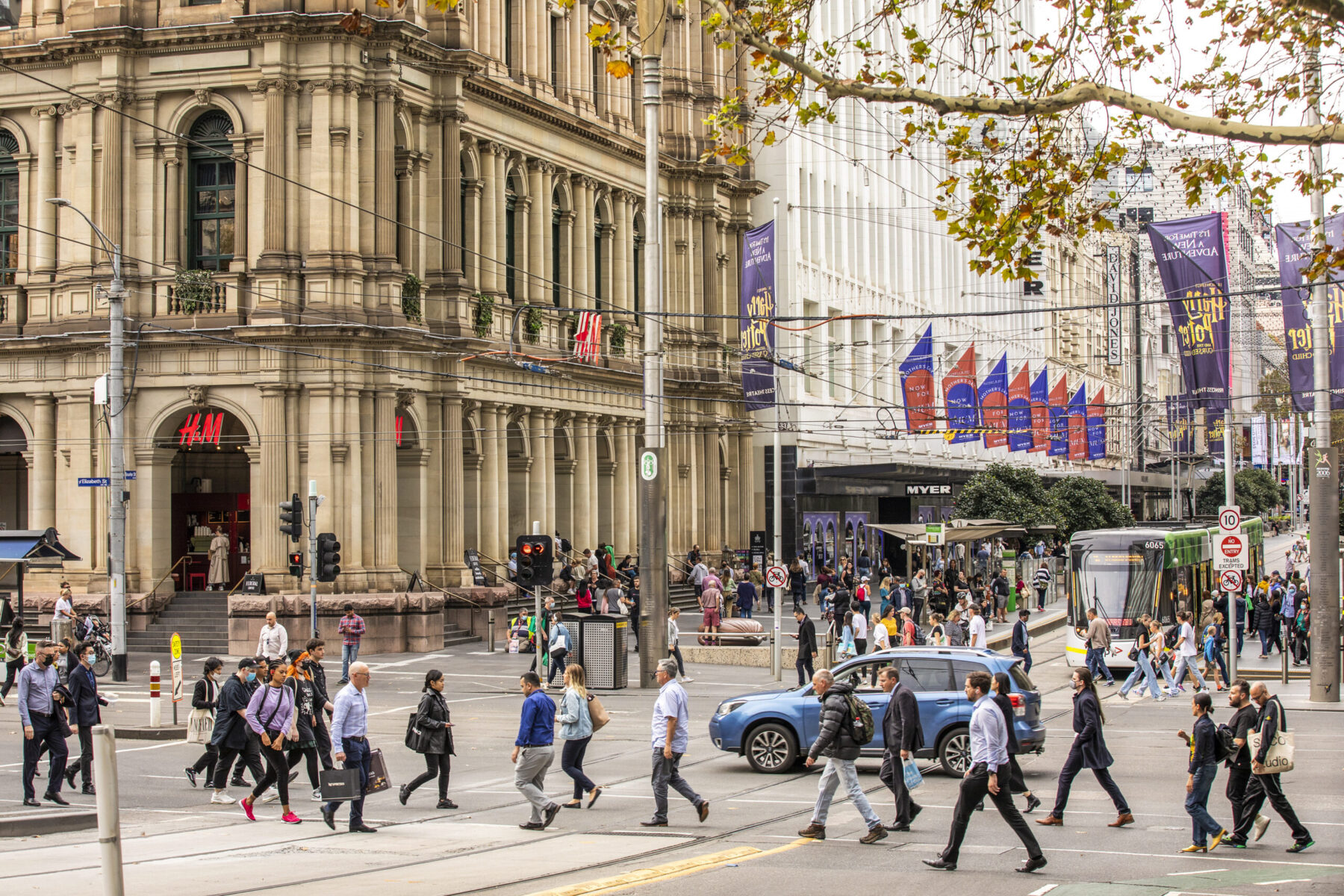
Walk the CBD 2025
A booming night-time economy, world-famous roll call of events, the return to the office and the upcoming completion of the Metro Tunnel are all fuelling Melbourne’s CBD retail rebound, which has seen vacancies come down for yet another year as the city experiences a generational period of change.
According to Fitzroys’ latest edition of Walk the CBD – the industry standard report for retail vacancies and tenancy mixes within Melbourne CBD’s precincts – vacancies have come down over the past 12 months from 8.0% to 6.1%, and have been slashed by more than half since recording 14.1% two years ago.
Hospitality, food and beverage and entertainment operators again drove the take-up of space over the past 12 months, with the proportion of these spaces increasing from 40.9% to 47.4% – and up further from the 34.1% at the beginning of 2023.
“At various points during and in the fall-out of the pandemic there was consternation as to what the role of the CBD might be going forward,” said Fitzroys Division Director – Agency, James Lockwood.
“Melbourne’s CBD is showing that it has a vital role to play as the cultural and financial heartbeat of Australia’s largest and fastest-growing city.”
Fitzroys’ 2025 Walk the CBD report also found:
- Retailers and operators are taking up space in anticipation of the completion of major projects, including of the Metro Tunnel in the coming year, as well as the ongoing return to the office.
- Swanston Street is now home to the lowest vacancy in the CBD, at just 2.6%, as tenants scramble to find a foothold around the entrances of the brand-new Town Hall and State Library Metro Tunnel stations.
- The CBD is heading further towards a night-time economy.
- The high number of international students continues to make its mark on the city.
- With a surging proportion of retail shopfronts being for hospitality, food and beverage and entertainment, the proportion of retail space occupied by service retail eased to 14.6%, and by specialty retail to 29.7%. The count takes in all street-facing shops, including those within arcades and shopping centres.
- Active development sites as a proportion of retail sites remained elevated at 2.3%.
“The post-pandemic period has been one of generational change for the Melbourne CBD. It’s reflected in the vacancy and tenancy mix data, in the shift to a night-time economy, and in the buzz of the city,” Lockwood said.
“Data during the year showed foot traffic in the city was up by 35% after 6pm1, and we’ve anecdotally seen a continuation of this trend.
“The recession of the 1990s was followed by innovation across the CBD, and we’re now seeing a similar pattern of new hospitality venues opening, laneways being activated and inner-city living taking off again.
“The CBD is again truly a cultural and financial centre.
“As well as being Melbourne’s financial hub, people are going to the CBD to eat and drink, to socialise, and for major events – sports, concerts and exhibitions.
“One of the CBD’s advantages is that Melbourne’s events are held in or on the edge of the CBD – at the MCG and the sports precinct, Federation Square, Marvel Stadium, the Arts Centre and NGV – so people spend time in the CBD to socialise and eat and drink before and after,” Lockwood said.
“We’ve seen that to full effect in that past year all the way through from Taylor Swift to the Grand Prix, over the course of the AFL season and AFL Grand Final between Brisbane and Sydney, Melbourne Spring Carnival, Boxing Day test featuring Australia and India, Coldplay and Robbie Williams concerts, and the Australian Open.”
The events are also major tourism drawcards, adding more buzz and activity to the CBD. STR Travel data showed that Melbourne’s hotels were at 93% occupancy at the midway point of the Australian Open2.
“Instagram-friendly events such as the NGV’s Yayoi Kusama world premiere exhibition are also bringing yet more people into the CBD,” Lockwood added.
Dan McCormack, National Retail Manager at Agence de Parfum, which is expanding its perfume brand offerings in the CBD, said, “We’re seeing a resurgence in foot traffic and customer activity.
“The city is coming back to life post-COVID, drawing locals and visitors alike.”
Zar Lee, operator of Shuji Sushi and several other outlets throughout the CBD and suburbs, said, “This is the best time to reposition ourselves with the Melbourne CBD’s changing landscape.”
“We’ve seen a steady increase in workers coming back to the CBD since the beginning of 2025, especially on Mondays compared to 2024 and 2023.”
Shuji Sushi has expanded into three new CBD projects over the past year, with two of deals struck by Fitzroys, at Makers Lane at 405 Bourke Street, and at Melbourne Quarter Two at 695 Collins Street.
Lockwood said, “What we’re seeing on the ground is that the momentum driven by the night- time economy and these major events is now being carried over into anticipation of the ongoing return of workers to the office.
“We’re seeing the government and more companies, such as Tabcorp, Amazon, Coles and Woolworths, mandating a return to the office – ranging from three days a week or up to five. Retailers are taking note.”
Hospitality and food and beverage driving activity
Hand-in-hand with Melbourne being an events capital is its world-class offering of bars, restaurants, cafés and entertainment venues.
City of Melbourne data in recent months showed permit approvals for alterations to shops and restaurants were up 89%3, showing new and existing operators have been looking to optimise their offering in response to the growing demand for hospitality and entertainment offerings in the CBD.
“We’re seeing a shift to a twilight economy,” Lockwood said. Melbourne City Council data showed shoppers were spending 19% more after hours in 2024 compared to a year earlier, and a 34% increase in after-work retail spending compared to pre-pandemic 2019.
Meanwhile, pedestrian activity around Melbourne Central is higher between 5pm and 10pm than before 12pm4.
“On the back of working-from-home arrangements in recent years Thursday became the new Friday, and we continue to see elevated visitation rates to the CBD on Thursday night, Friday nights and across the weekend.
“Some operators are opening later and closing later. We’re becoming a 24-hour city.”
“Social media is also a driver. Younger consumers are shopping later in the day and love to post their luxury shopping outings and their sessions on rooftop bars to social media.”
Lockwood said Melbourne offers a high quality of restaurants and there is a renewal taking place of some iconic locations. Fitzroys Agency Executive Franklin Gikas and Lockwood recently negotiated the lease of the ex-Izakaya Den space at Basement 3, 114 Russell Street, which for 15 years was home to the renowned Japanese venue. It will become home to a new high-end Japanese restaurant and bar Miyazaki Gyu, specialising in Wagyu beef.
Fitzroys has negotiated multiple hospitality leases recently – Chilango’s Mexican Cantina and banh mi eatery Crackle Bae have taken spaces in Madame Brussels Lane, while Tori’s Bakery Cafè leased a space on the ground floor at the recently-refurbished 124 Exhibition Street, and the ground floor at 136 Exhibition Street has been leased to South East Asian dining restaurant Juni.
“These hospitality deals were struck with secure long-term commitments. Operators have seen the shift in balance of the CBD towards a lifestyle playground and are confident in its viability,” Gikas said.
Lockwood said Melbourne’s raft of high-end restaurants – such as the Chris Lucas stable of venues – continue to trade well and attract people to the city.
Meanwhile, the growing local population and more people coming into the city to dine at BYO restaurants has driven two new key deals. Gikas and Lockwood have leased 1/360 Bourke Street to Bottlestop, while 62 Elizabeth Street has been leased to Endeavour Group- owned BWS. Both deals are moving through the permit phase.
Metro Tunnel shifts retailers’ focus
Swanston Street is now home to the sharpest vacancy rates in the Melbourne CBD, having just a few years ago been overrun by empty shops in the depths of COVID.
“Swanston Street runs through the heart of the CBD and has been somewhat of a bellwether for the CBD’s fortunes over the past five years,” Lockwood said.
“The Metro Tunnel has taken some key pockets of Swanston Street out of action for a long time, but these major construction sites are set to become hives of activity nearly overnight that retailers and hospitality operators will really be able to thrive off,” Lockwood said.
Swanston Street’s vacancy is now just 2.6%, as tenants sought to get in ahead of the opening of the Town Hall and State Library Metro Tunnel stations. Fast food giant Hungry Jack’s opened a new restaurant at 163-165 Swanston Street, and was joined on the street by Japanese steakhouse Yappari Steak, chocolatiers Godiva, bubble tea outlet Tingtea, Waffle Cake, and W Cosmetics.
Major projects are driving leasing deals around the city. The Bourke Street Mall revitalisation continued, and vacancies were kept low for another year at 4.0%. The S150 million Melbourne Walk redevelopment has recently topped out, and will bring two new IHG Hotels to the centre of the city, as well as a JD Sports Australian flagship store. The Mall is also seeing the transformation of the former David Jones menswear store into a Mecca flagship and new Rodd & Gunn concept store, as well as office space that will boost the immediate catchment, while local jeweller Michael Hill has opened a new five-floor flagship store in the Mall across from its existing shop on the corner of Swanston Street.
Perennial contender for the lowest vacancy rate, the east end of Collins Street – famously the “Paris end” – returned a sharp result for yet another year at just 4.1%, attracting Melburnians, interstate and international visitors to its top-line luxury retail offering. Collins Street west saw Italian food hall Mercato Centrale make its long-awaited debut outside of Italy in the McPherson’s Building. More centrally, the block immediately west of Swanston Street minted its place as Australia’s premier luxury watch precinct after Swiss watchmaker Swatch opened a flagship store at the front of 260 Collins (formerly St Collins Lane), and Japanese watchmaker Grant Seiko opened a flagship at the Collins Street entrance of the Block Arcade. Bovet 1822 and Bremont have also opened up in the Arcade.
Activity on Little Collins Street was headlined by German camera maker Leica opening its biggest global store at number 267, in a four-storey Art Deco building with 540sqm of space, while hospitality operators Longrain Canteen, Hector’s Deli, FOC and Greenstreat all opened up. Vacancies came down to 8.2%.
Elizabeth Street has been a major improver in the past two years – sitting at more than 22% at the beginning of 2022 to sit at just 8.1% now.
Melbourne’s famous Chinatown saw the proportion of retail spaces being used for food and beverage and hospitality jump again, ensuring more queues stretching out the door of its famed dumpling houses and eateries that attract visitors from across Melbourne and tourists. The influence of international students continues to see the modernising of the food offering, prompting the introduction of Southern Thai cuisine restaurant Nora, among others, and has also effectively encouraged the expansion of the precinct further into the laneways and north up Swanston Street and around Lonsdale Street, towards the universities and student accommodation precinct.
1 https://www.melbourne.vic.gov.au/media/retailers-urged-tap-twilight-trading
2 https://www.premier.vic.gov.au/biggest-ever-australian-open-smashes-records
3 https://www.shoppingcentrenews.com.au/latest-news/industry-news/melbourne-walk-tops-out/
4 https://mvga-prod-files.s3.ap-southeast-4.amazonaws.com/public/2024-09/melbourne-economy-snapshot-september-2024.pdf





